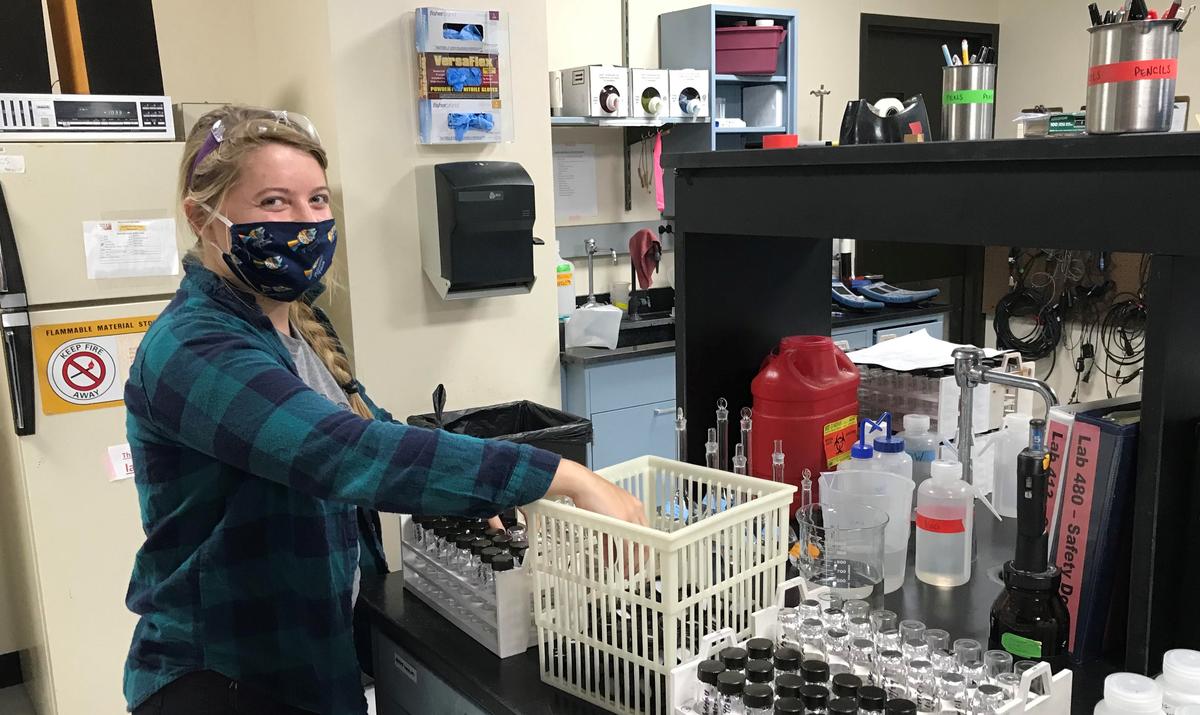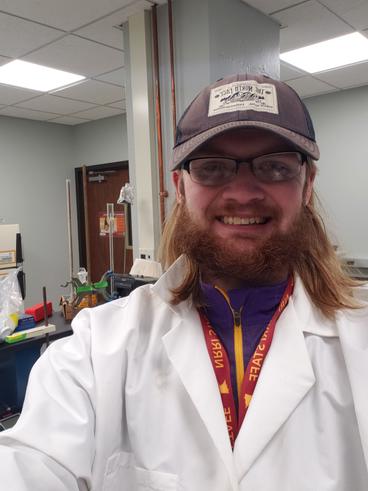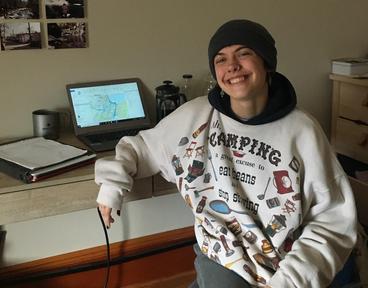NRRI’s Duluth location is sometimes the biggest challenge to working there for undergraduate students. More than six miles from campus and not on a bus line.
“Before I brought my car up from home, I bummed rides from friends or took an Uber,” said Katherine Sheldon, a third-year student who will be graduating in May 2021. “Once I even walked back to campus on a warm summer evening. It took about two hours.”
But for Sheldon, Brennan Pederson and Eva Hendrickson their work in the Water Research Group, supervised by NRRI Aquatic Scientist Beth Bernhardt, it’s worth the effort. Working at NRRI has made their classroom work come alive.
“My job as a lab technician puts all the chemistry techniques I’ve learned to use,” said Hendrickson, a UMD senior majoring in chemistry. “I’m taking a graduate level water chemistry class this semester and working at NRRI has really helped put it all together.”
Pederson is in his first year of undergraduate coursework as a biology major so working at NRRI has challenged him to learn on the job.
“I’m learning advanced processes in the lab that we haven’t covered yet in class,” he said. “Things that I’ve done at NRRI show up in my classes and it gives me a deeper understanding.”
The three students had a busy summer surveying streams for a crowd hydrology project – an effort to gather stream flow data from citizens who text in stream depth information. That means they got to spend a lot of time in the streams gathering information on the shapes of the stream bottoms to understand water flow.
“I surprised my professors in my Environmental Sciences class by raising my hand when they asked if anyone had done a stream survey,” said Sheldon. “They don’t usually see students with that experience.”
The three also spent a lot of time at the Fens Wetland Bank Restoration site near Zim, Minn. They took water samples and sonde measurements from wells and also helped create and deploy well loggers to monitor the fen bog’s water quality.
Hendrickson really values the experience she got with NRRI Limnology Scientist Christopher Filstrup collecting and analyzing samples of harmful cyanobacteria algae. That work inspired her to write a research paper on cyanobacteria and pursue a master's degree.
Pederson hopes to continue working at NRRI throughout his UMD career. “Hopefully, the longer I’m there, the more variety of projects I can take on,” he said.
Sheldon is applying for jobs as a biological technician in fisheries and wildlife. “I just want to be outside,” she said. “Working at NRRI has been a great experience that has taught me a lot about water, chemistry and Duluth.”
“NRRI highly values the engagement of students in the work we do,” said Executive Director Rolf Weberg. “It provides them relevant applied research experience unique to NRRI and UMD while infusing our permanent research staff with new energy and ideas.”


